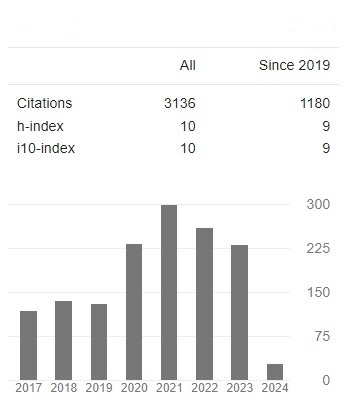Implementation Level of Event-Based Surveillance (EBS) as Surveillance Core Capacity Under International Health Regulation in Sudan, 2020: Cross-Sectional Study
Abstract
Abdalla Mohammed Abdalla, Alaa Hamed Dafalla Idreis, Daffalla Alam Elhuda
Background: Surveillance system of infectious diseases and event is recognized as the cornerstone of public health decision-making and practice additionally, the international health regulation requested counties to implement other type of surveillance to support the routine surveillance system and to increase the detection rate and sensitivity in reporting the diseases, event, or any public health emergency with international concern (PHEIC). The aim of this study to assess the implementation level of event-based surveillance systems to ensuring that the system implemented efficiently and effectively.
Methods: descriptive cross sectional institutional based study conducted for all 18 surveillance officer at states to assess the implementation level of event-based surveillance system as core capacity under the international health regulation 2005 (IHR), Data was collected using a per-prepared and pretested questionnaire followed WHO/EMRO tools for surveillance staff at state level felt through field visit and phone calls, data collection also cover the community based surveillance and surveillance system at point of entry as part of event based surveillance, interview done for surveillance focal person at federal level. Data were analyzed using Statistical Packages for Social Sciences (SPSS) (version 20). Written and verbal consents were obtained from all participants as appropriate.
Results: Event based surveillance started in 2016 endorsement and approval of guidelines SOPs and training materials has been develop in 2017 so the study showed significant positive changes in implementation of this system for that the results showed the system implemented in all 18 states, availability of guidelines and SOPs at state level 72.2%, completeness, and timeliness of system data 94.4%, designated focal person in the surveillance structure at state level 94.4%. community Based Surveillance (CBS) implementation Results at states level -Sudan from 2017 – 2020 the result showed the system has been implemented in 17 states (94.4%), the percentage of assigned focal person for the system was 94.1 – trained volunteer at community level 94.4% and availability of system guidelines was 94.1%, the availability of system SOPs 88.2%. The study results also showed the percentage of 94.4 for definition of CBS syndromes, immediate response for event reported was 94.4%, Daily and weekly reports completed send by community volunteers was 94.4% and availability of reporting forms was 94.1% also percentage of 70.6% for system data base and shared the report with the partners. Point of entry Surveillance (PoE) implementation at the states level Results showed that the surveillance at points of entry has been fully implemented in 6 state 46.1% which it had point of entry and it has been designated by IHR, the system had focal person, the training done for all staff with availability of system guidelines and SOPs all this done by 100% 83.3% of point of entry reported Daily and weekly reports, the percentage of report completeness and timeliness was 66.7% with 83.3% for the zero report when no event of cases reported, availability of system data base and documentation for the events and cases reported through the system was 83.3%.
Conclusion: The study showed significant positive changes in implementation of event-based surveillance system under the international health regulation, based on the finding the study recommended that, rapid and early response for the reported cases and rumors or any other event from the locality and state level, Regular refresh, and basic training for surveillance staff internally and external training and strengthen the data management mechanism.




